Tomorrow will see Atletico Madrid finally kick off their 2020/21 La Liga campaign after missing the first two matches of the season due to their extended run in the Champions League. Diego Simeone’s men will be looking to put the disappointment of their quarter-final exit, and last season’s third place league finish (their lowest since 2016/17) behind them.
They will be welcoming Granada to Wanda Metropolitano in what will be an exciting tactical battle. Their manager, Diego Martínez, has taken the team from strength to strength since taking over in 2018, and this culminated last season with a seventh-place finish and qualification for the Europa League. After the second round of fixtures, Granada sat top of La Liga with two wins from two, conceding just once along the way.
This tactical analysis will breakdown the ways in which both sides are likely to approach to the match. It will analyse the key tactics, trends and personnel that may be observed during the match, and ultimately provide an overview of how this interesting matchup might play out over 90 minutes.
Predicted Lineups
It is likely that Atlético will not deviate from the team that was fielded against RB Leipzig last month. The back five are very settled, with the ever-solid Jan Oblak behind a defence of Renan Lodi, Stefan Savić, José Giménez and Kieran Trippier. Saúl Ñíguez and Héctor Herrera will anchor the midfield, with Koke and Yannick Carrasco likely to start on the wings – an area which Atlético have a lot of depth. Diego Costa and Marcos Llorente are the prospective line-leaders in attack.
Martínez will likely opt for a 4-3-3 formation – sticking to the shape which has brought him much success so far. Rui Silva is the ever-present between the sticks, and ahead of him is a back four of: Carlos Neva, Domingos Duarte, Jesús Vallejo and Víctor Díaz, who is replacing the injured Dimitri Foulquier. The midfield will be anchored by the journeyman Maxime Gonalons, with Ángel Montoro and Luis Milla just ahead of him. Roberto Soldado will lead the line and be supported by the wide men of Darwin Machís and Antonio Puertas.
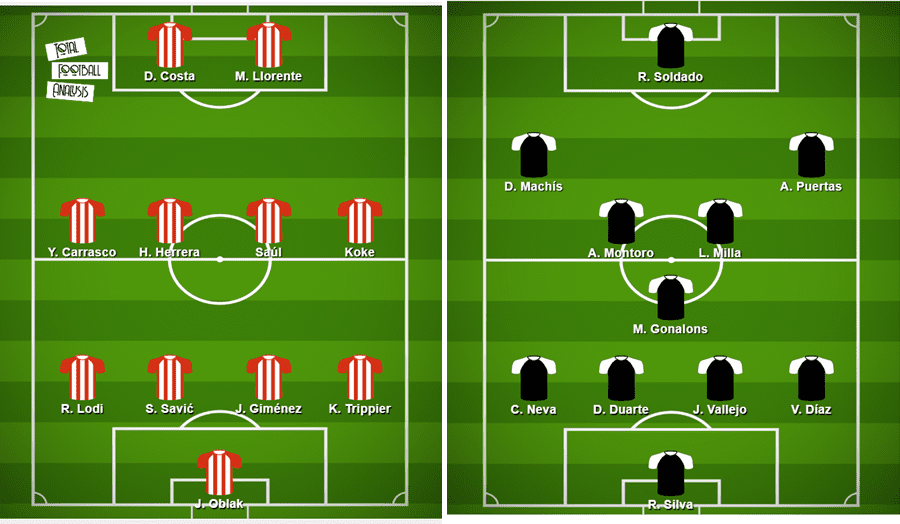
Atlético’s defensive rigidity
Anyone who watches Atlético is familiar with how Simeone likes to set up defensively. He will deploy a 4-4-2 and instruct his team to sit in three, narrow, mid-low blocks. The success of this has famed Atlético and they are frequently cited as one of the most solid defensive teams in the world – last season, they conceded just 27 league goals. They make it very difficult for teams to break them down and get close to the goal, and this is personified by the fact that the average distance of a shot they faced last season was 20 metres – the highest in La Liga. They also conceded the least xG per shot faced, with 0.09.
Their defensive shape is pictured below, with a still from a game late on in the 2019/20 campaign against Real Sociedad. Immediately, it is noticeable that all of their players are behind the ball and in the three horizontal blocks previously described. By leaving little space between the lines, teams are forced to go around the outside. If teams do elect to attack down the middle, they will be closed intensely. This is rare however, finding space between the lines requires adept positional and spatial awareness, as well as excellent passing and control.
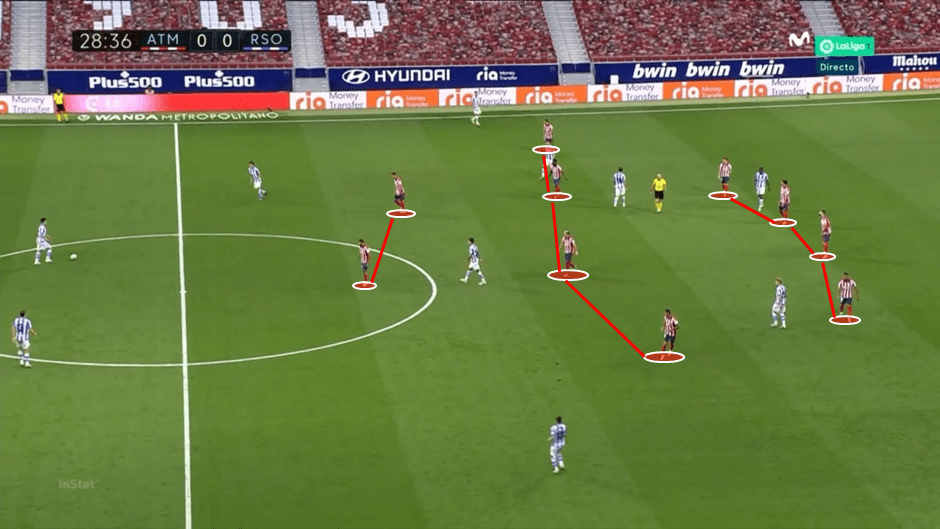
Atlético’s PPDA of 9.63 last season was only slightly below the average figure. This is because they are keen to sit off when teams begin possession in their own half (they averaged just 46.5% possession last season), but as opponents enter the penetration phase, Atlético begin their press and shut down the (little) space that teams may seek to penetrate. As a result, we can understand why their PPDA is average, but we can also see why they are so hard to breakdown.
Against Granada, the tactics will not change, and they will seek to sit off as Granada build up the play. Their average formation from their quarter-final against Leipzig is shown below.
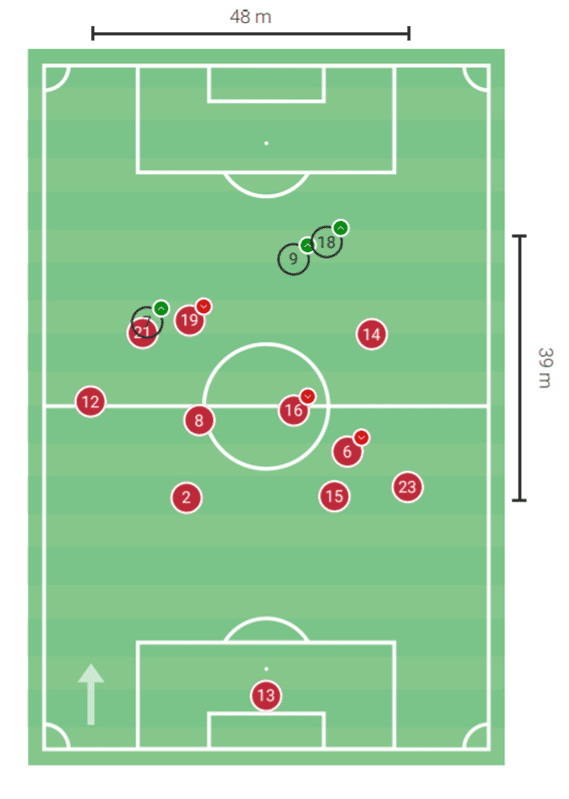
We can note the depth of the midfield – especially Koke on the right, and can also see the lack of space between the lines, with a formational length of just 39 metres. Owing to this, it is unlikely that Granada will aim to penetrate centrally in attack, and they are likely to opt to attack using the wings. Their 4-3-3 formation lacks the presence of a playmaker who can play intricate passes between the lines. Coupling their pace up front and out wide with the narrowness that Atlético like to defend with, we may see Granada aim to exploit the wings, just like Sociedad were able to do in the still below.
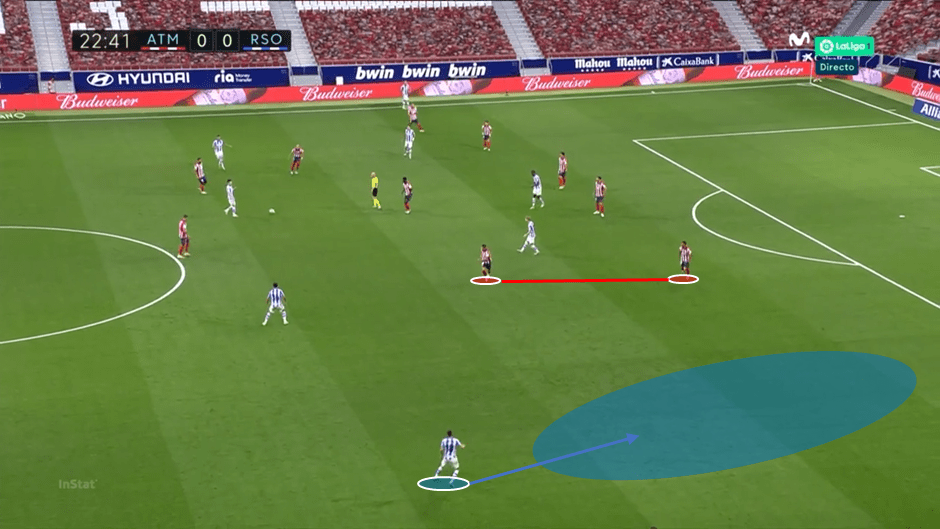
Granada utilise the wide areas
With an average possession of just 44.5% in the league last year – the 17th highest – Granada are not keen to keep the ball for longer than necessary. Their main transitional tactic is to hit long balls over the top, either to Soldado (whose experience makes up for his diminishing pace), or to the wings, where quick full-backs and wingers reside. Granada last season made just 281.63 passes per 90 (the league average was 375.8), with 39.5% of these being forward and 16% of them long.
Yet, they still managed to score 52 league goals last season – one more than Atlético and more than 13 other teams. The long ball is an effective tactic when you possess the pace that Granada do. Machís is an excellent example of the utilisation of pace, and his effectiveness is displayed by the fact he averaged 2.77 shots per 90 in La Liga last season – the tenth most of any player. He also averages 1 successful final third dribble and 1.8 crosses per game. Their average shape from their 2-0 win against Alavés is shown below.
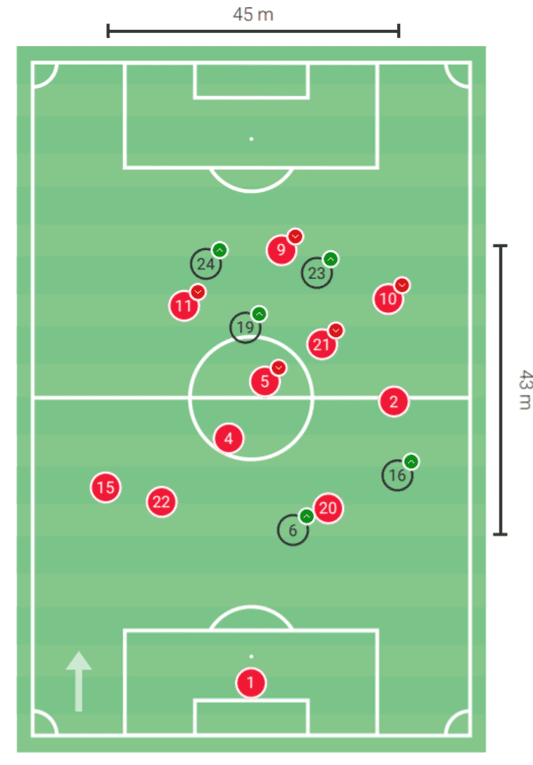
The 45m width is notable, but what is interesting is the tendency to drift to the right-hand side. Machís operated in almost a centre-forward role, providing a direct threat over the top, while Foulquier and Puertas on the right-wing push exceptionally high and wide. The shape can be seen in the still below from their 2-0 win against Athletic Bilbao. With Puertas by the touchline, Foulquier also pushed up immensely high and decided to invert his run, overloading the left-back. Soldado also drifted to the right and, finally, Herrera came across to offer more central support. He is free, with the two midfielders occupied by the ball carrier, and can receive the ball and turn or then send it in behind.
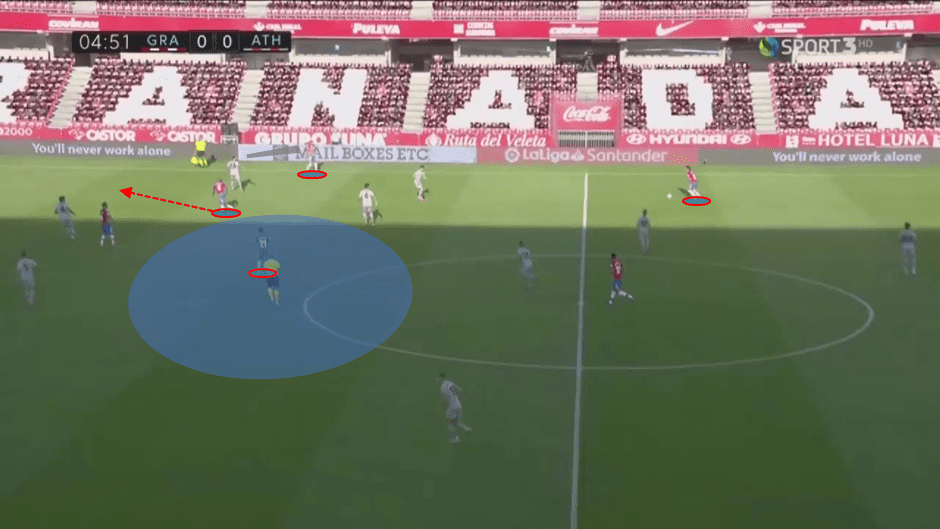
While these tactics have proven effective for Granada on multiple occasions, facing Atlético is a completely different task. The depth of Atlético in defence has already been noted. By shutting off the space behind the defenders, the area in which a pass can be received is squeezed. Also, when in the final third, Granada’s attackers will be closed intensely and relentlessly, meaning it will be difficult to create any sort of opening should they have possession in the final third. Yet, the narrowness of Atlético in defence is something that can be exploited and something that Martínez will undoubtedly be aware of. By overloading the flanks, Granada could create themselves some wide 2-on-1 situations which can in turn create their chances. Atlético suffered from this against Sociedad and Adnan Januzaj last season, as depicted in the still below.
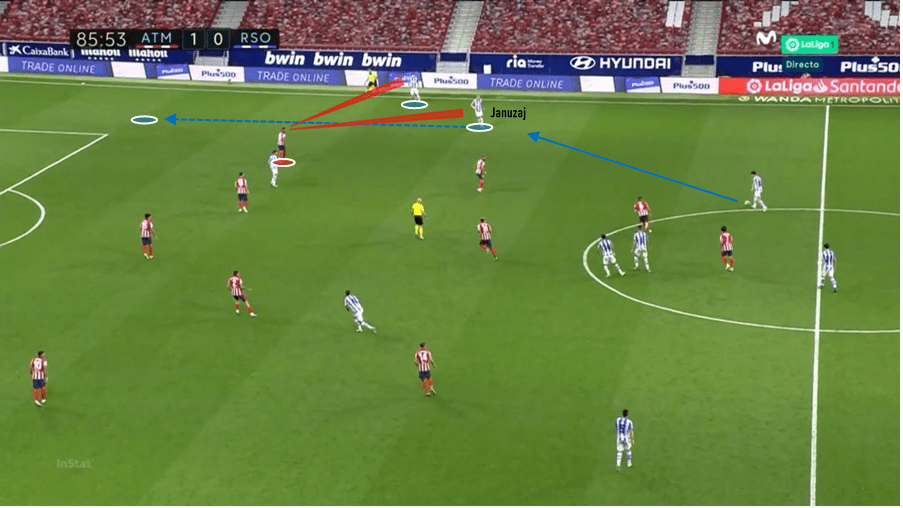
Atlético’s unorthodox attacking shape
While Atlético are renowned for their defensive capabilities, they still scored 51 goals last season, making them the seventh highest scorers in La Liga. Their attacking shape is interesting however. While it is similar to the 4-4-2 they rigidly defend in, there are a few quirks that make it a stimulating system. Their average shape is shown below.
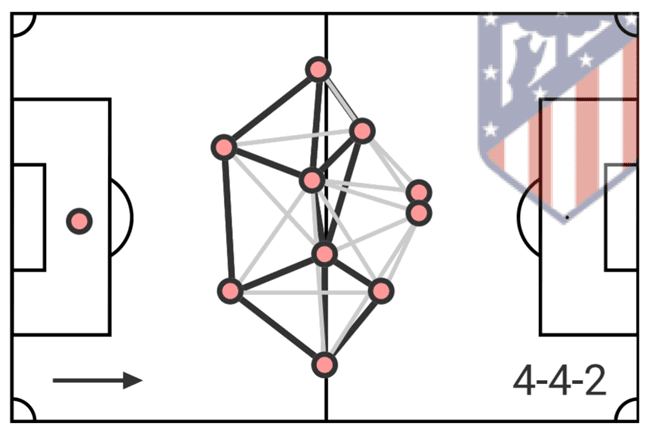
The most notable feature is how narrowly the two wingers are tucked inside. During attacks, Atlético’s wide midfielders will come right inside and support the two strikers by playing just off of them, thus creating a central overload in Zone 14. This presents a direct threat to any opposition defence, with so many men close to the penalty box. Atlético’s attacks will stem from the centre of the pitch – 39% of their attacks last season began in middle as opposed to on the flanks, which was the third highest figure in La Liga. The narrowness of the midfielders also caters for the advancement of the full-backs by drawing attention away from the wide areas and creating space. With all this considered, it can be concluded that Atlético’s attacking shape is much more of a 2-4-2-2, as depicted below.
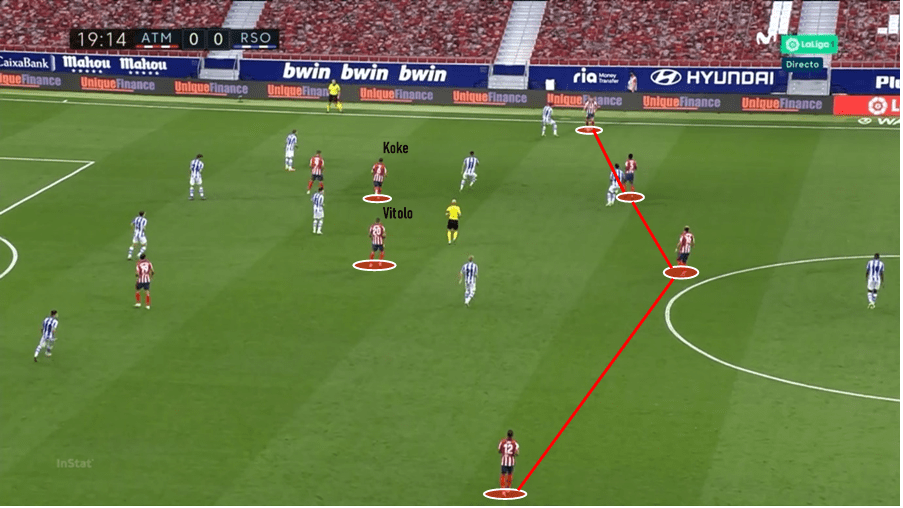
In this case, Koke and Vitolo were the men tasked with coming inside. As these are the men the opposition full-backs would naturally mark, their attentions are brought to the inside of the pitch as they disregard the outside space. This allows for, when the time is right, Atlético’s full-backs to dart into the wide space and get in behind the opposition defence. Atlético made 8.99 through passes per 90 last season, a figure only bettered by Barcelona. The system cleverly diverts the attention of the opposition full-backs and tricks them into leaving gaps. Yet, should they ignore the men drifting inside, Atlético are advantaged with a severe central overload, meaning that the opposing defence is often left with a dilemma. With Koke and Vitolo dictating the narrowness of Sociedad’s defence, we can see the space awarded to the full-backs below.
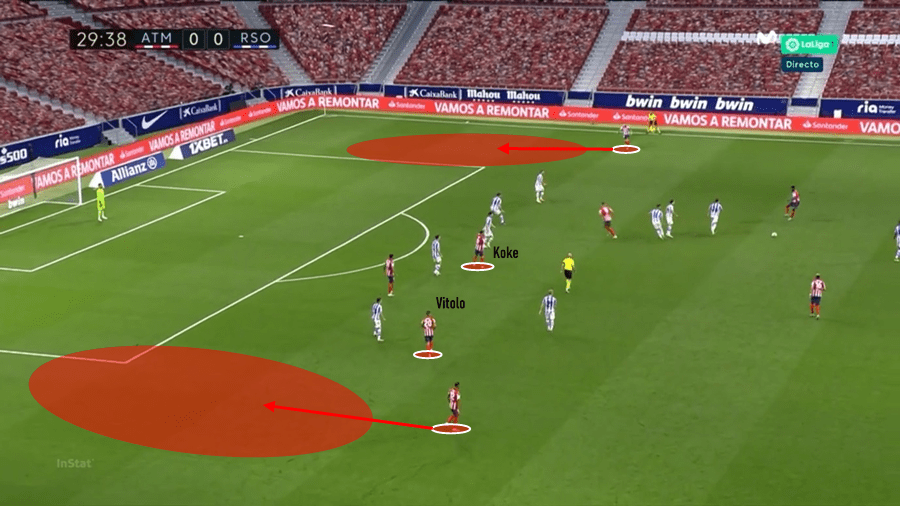
One issue with this system is that a lot of Atlético’s attacks breakdown in the middle third of the pitch. With the wide midfielders progressing centrally, there are a lack of horizontal options, and breaking the lines with one lateral pass is not easy. If Granada close Atlético quickly in the middle third, they could recover possession often and launch their own counter-attacks. One daring tactic would be to leave their own wingers high when defending, which may disincentivise the Atlético full-backs from attacking the final third. If they still attack high, there will be plenty of space for the likes of Puertas to exploit on the counter.
Granada’s high defensive line
Granada conceded 45 goals in La Liga last season, giving them the eighth best defensive record. They defend in a medium-high block but only engage the ball when it enters their half, which is when they become more aggressive by prioritising closing the ball carrier and his options rather than space in behind. By squeezing high, if they cannot recover possession, they aim to force the opponent to take a shot from distance. With little time on the ball, opposition attackers may struggle to pick out a pass in the congested final third, and may give away possession following a rushed pass or wayward shot.
Ideally, Granada would stop the attack from reaching the final third, and we can see in the still below not only the desire to close the ball carrier when he enters their half, but the height of the defensive line also.
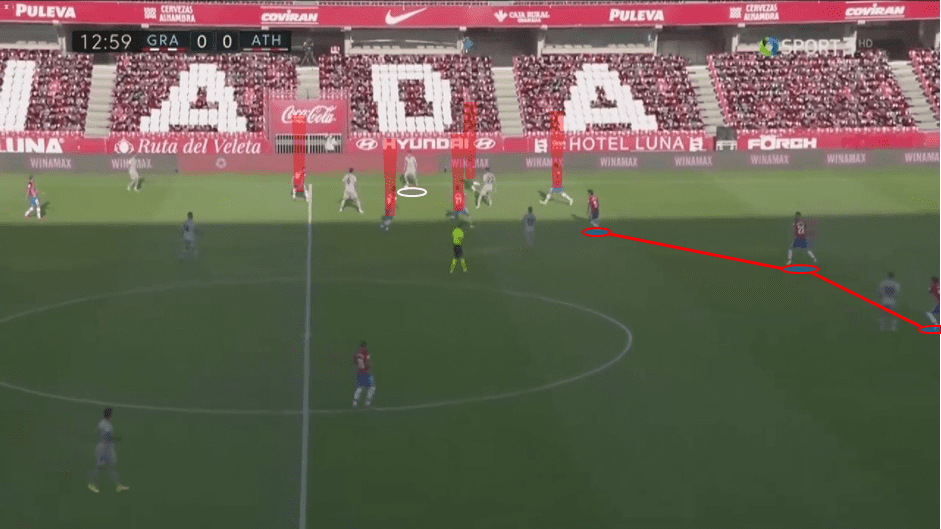
With five players surrounding the ball, options for the ball carrier are to be desired, and he would certainly be unable to keep possession if he tried to progress the ball forwards. Should Granada fail to win the ball back following the squeeze, they will likely still force the opposition backwards, thus allowing them reset back into their shape. However, this shape is nowhere near as defined and rigid as Atlético’s for example. While the back four will begin high and in-line, the two more advanced central midfielders are given the freedom to choose where they setup. However, this often leaves space in-between the lines to exploit. Also, if possible, the wingers will remain high ready for a counter-attack.
In transition, Granada often struggle. Not only are the centre-backs weak in the air, but due to the height of their full-backs and midfielders in attack, they leave themselves susceptible to counter-attacks. The still below displays Bilbao advancing in possession unopposed, with Granada’s defensive line very high.
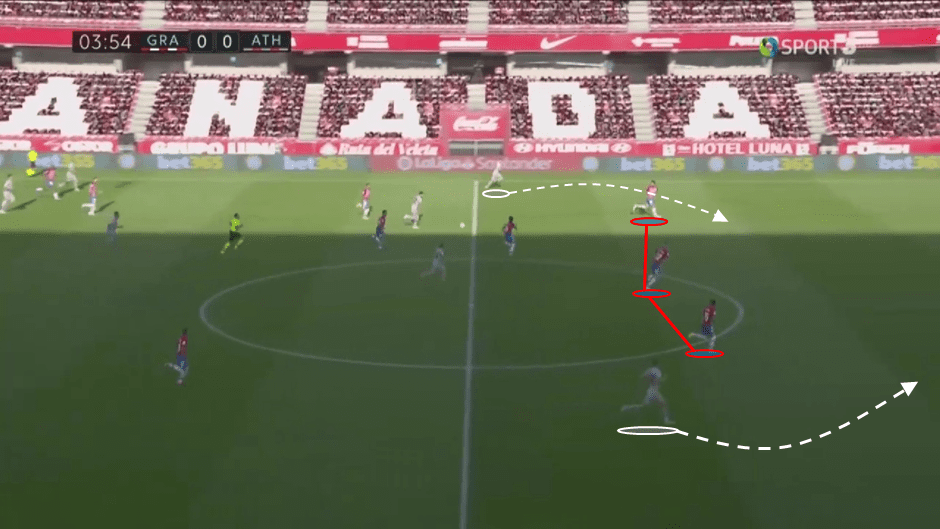
It would be feasible to imagine Atlético trying to counter-attack against Granada. The tenacity of their strikers may catch out the high line of Granada, and Atlético certainly possess players capable of playing a teasing ball over the top. The wide areas will be really important for both teams, especially in transition. Should Granada’s wingers fail to attend to their defensive duties, Trippier and Lodi could have a field day out wide. It will be down to Atlético’s wide midfielders also to come inside and aim to pull the strings. If they can find space to operate between the lines, Granada’s defence could be torn apart. Yet, it would be unfair to write off Granada’s defence this early: if they stay organised and trap Atlético high up the pitch, they could frustrate their opponents.
Conclusion and prediction
One guarantee is that the game tomorrow will be an incredibly tactical battle. While, on the pitch, this may play out as a game of few chances and goals, from a tactical standpoint, this game will be very interesting. Viewers should look out for how both managers decide to use the wide areas, and if the full-backs on both sides are given more restricted roles to avoid vulnerability on the counter-attack.
My prediction: Atletico Madrid 1-1 Granada
Granada will be keen to continue their strong start to the 2020/21 campaign and will be focused on coming away with something. While they are unlikely to be strong enough at the back to keep a clean sheet, this analysis showed they do possess plenty of pace going forward which will threaten Atlético. Atlético will be wanting to get off on the right foot, but Granada are likely to be sharper due to the fact they’ve played two games already. Atlético will, as ever, seek to frustrate and pounce, but they may require a few games to get themselves going this season.


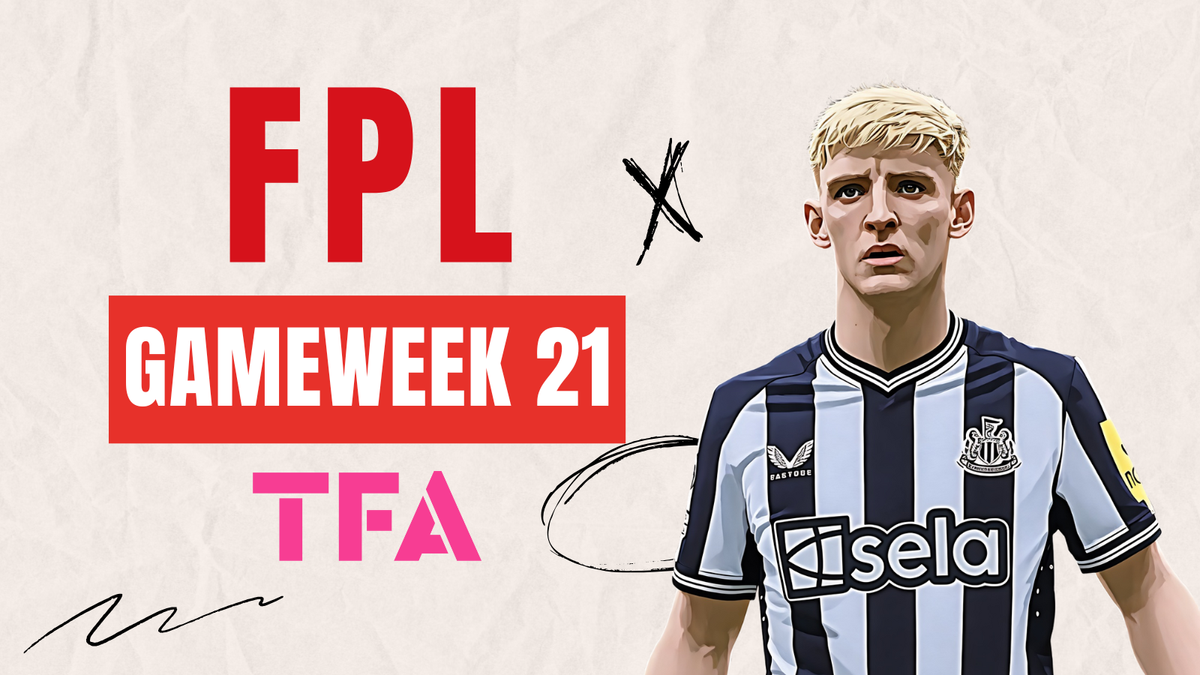

Comments